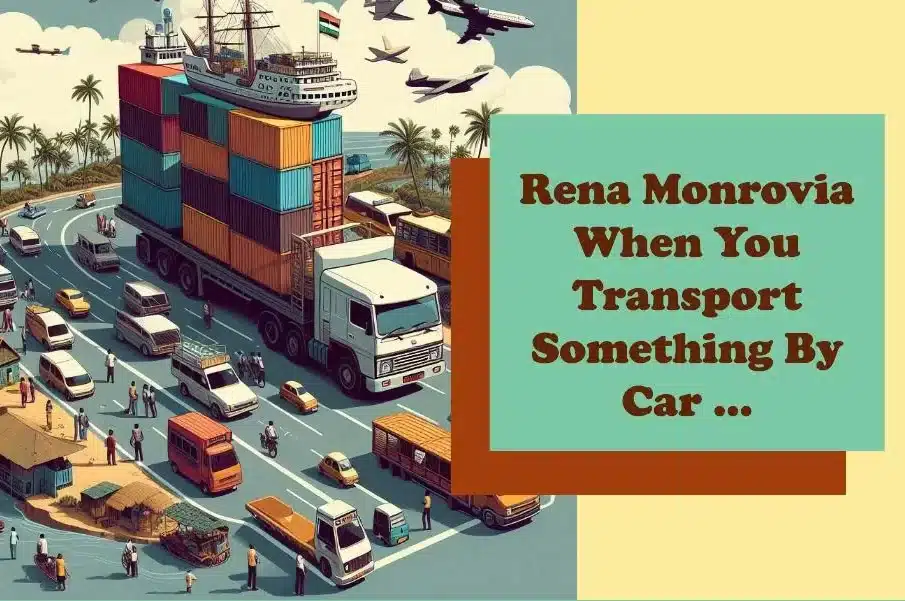In the bustling city of Monrovia, Liberia, early morning streets are alive with the sounds of daily life. The city’s arteries pump with activity from the soft hum of the city’s steady rumble of cars. Among these vehicles, you’ll find Samuel, a local entrepreneur, carefully loading his car with fresh produce. His journey from the central market to various neighborhood stores paints a vivid picture of Monrovia’s logistical challenges and opportunities for transporting goods by car.
Transporting goods by car in Monrovia is essential to the city’s economy. With limited infrastructure for large-scale logistics and a growing urban population, using vehicles for transportation is both a necessity and a challenge. According to the World Bank, Monrovia’s population exceeds one million, with a significant portion relying on small businesses for daily needs. This dynamic creates a unique environment where cars serve as the primary mode of transportation for goods.
The Importance of Car Transport in Monrovia
The reliance on cars to transport goods in Monrovia stems from several factors. Firstly, while improving road infrastructure, it still poses significant challenges for large trucks. Many narrow roads need to be in better condition, making it difficult for larger vehicles to navigate. As a result, smaller cars and vans are more practical for urban deliveries.
Secondly, car transport’s flexibility is crucial for small business owners like Samuel. Unlike larger vehicles, cars can easily maneuver through Monrovia’s congested streets, allowing timely and efficient deliveries. This flexibility is essential in a city where traffic congestion is a daily reality. A study by the International Growth Centre highlights that traffic congestion in Monrovia can increase travel time by up to 50%, making efficient logistics planning essential for businesses.
Economic Impact and Statistics
The economic impact of transporting goods by car in Monrovia is significant. Small and medium-sized enterprises (SMEs) form the backbone of the city’s economy, and their success largely depends on efficient logistics. According to a report by the International Finance Corporation (IFC), SMEs in Monrovia contribute to over 60% of employment and 40% of the GDP. For these businesses, transporting goods reliably and efficiently by car is vital.
Regarding volume, most goods transported by car in Monrovia include agricultural produce, retail goods, and construction materials. The Ministry of Commerce and Industry reports that small vehicles account for approximately 70% of goods transported within the city. This statistic underscores the critical role that car transport plays in the local economy.
Challenges Faced
Despite its importance, transporting goods by car in Monrovia is challenging. Traffic congestion, as mentioned earlier, is a significant issue. The city’s road network is often clogged, especially during peak hours, leading to delays and increased fuel consumption. Additionally, vehicle maintenance and fuel costs can be prohibitive for small business owners.
Another significant challenge is the need for formal logistics infrastructure. Many businesses rely on informal networks and personal vehicles for transport, which can lead to inefficiencies and increased costs. A survey by the Liberia Institute of Statistics and Geo-Information Services (LISGIS) found that over 50% of small business owners use their vehicles for business purposes, highlighting the need for better logistics support and infrastructure.

Solutions and Future Prospects
Addressing these challenges requires a multi-faceted approach. Improving road infrastructure is a critical first step. With support from international partners, the Liberian government has initiated several projects to upgrade and expand the city’s road network. These efforts are expected to ease congestion and improve the efficiency of goods transport.
Investing in formal logistics infrastructure is another essential solution. Establishing centralized distribution centers and improving public transportation systems can reduce the reliance on personal vehicles for business transport. Additionally, promoting fuel-efficient and environmentally friendly vehicles can mitigate the high car transport costs.
Technology also offers promising solutions. Digital platforms that connect small business owners with transport providers can enhance efficiency and reduce costs. For example, ride-sharing apps adapted for goods transport could streamline logistics and provide more reliable services.
Conclusion
Transporting goods by car in Monrovia is a complex but vital aspect of the city’s economy. As Samuel navigates the bustling streets, his journey reflects the broader challenges and opportunities many entrepreneurs face in Monrovia. By addressing infrastructure shortcomings, investing in formal logistics solutions, and leveraging technology, Monrovia can enhance its urban logistics and support the growth of its vibrant SME sector. In doing so, the city can ensure that the heartbeat of its economy continues to thrive, driven by the dedicated individuals who transport goods daily.




